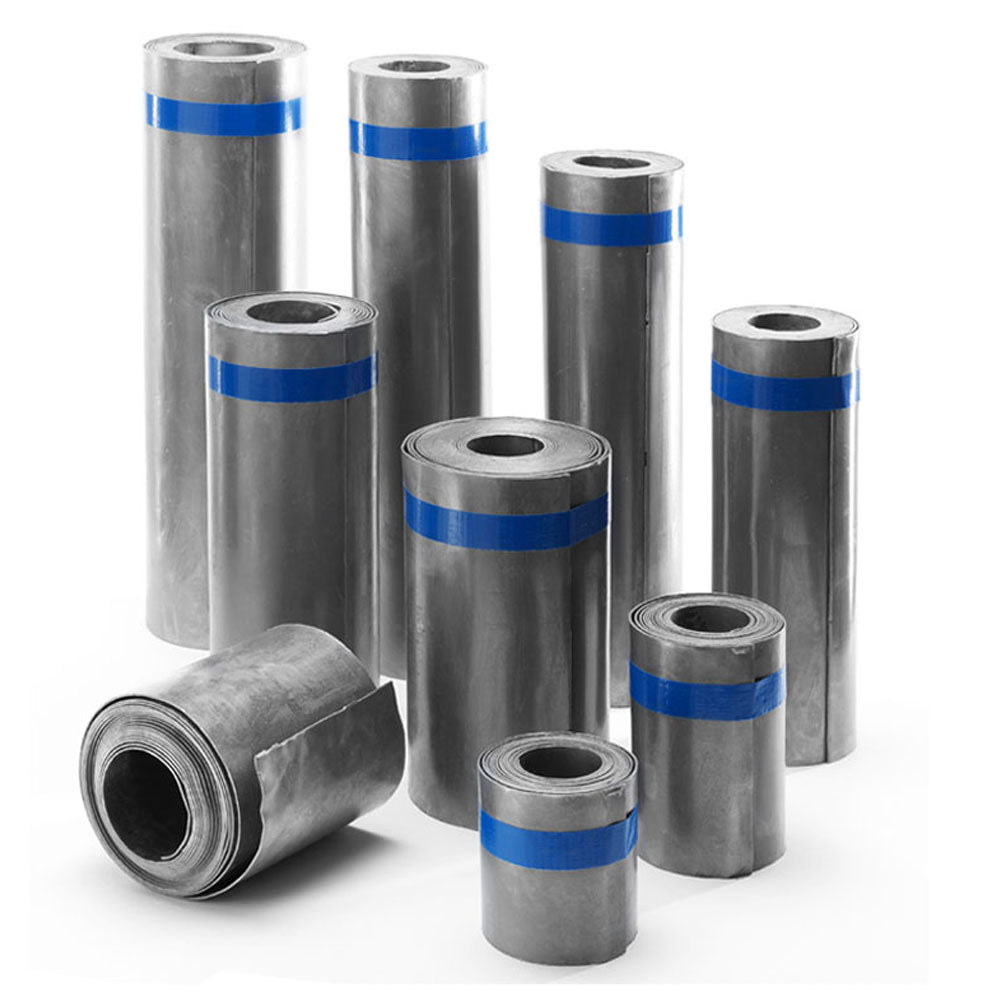Lead codes determine the weight (and hence the thickness) of lead sheet. The number in the code simply equates to the weight in lbs, per square foot of lead.
The importance of using the correct lead code:
When installed correctly, the lead will often outlast the life of the building. Where lead is installed incorrectly, especially where a thinner than recommended code has been used, it will deteriorate rapidly.
This is because lead is susceptible to three major influences.
Installation of Flashing
On anything but the simplest of flashings, the lead sheet must be repeatedly folded and worked into place. If you attempt to do this using a thinner code of lead sheet than that recommended, the lead is very likely to split, leaving the building exposed to water penetration.
A thicker code of lead aids the roofer or builder in two ways. It allows the lead to be folded without splitting. A thicker sheet of lead (the thicker the sheet the higher the code), also enables the lead to be beaten around corners without a dramatic thinning of lead (remember that lead should not be thinned by more than 25% of its thickness).
Expansion & Contraction:
On even relatively mild days, the lead will expand in the heat of the day, and contract during the cool of night. For small areas of lead, this generally does not cause a problem. Where lead has been used to cover large areas – such as over a dormer window, or on a flat roof, unless thicker codes of lead are used, it will start to buckle, twist and split.
Lead suppliers have recognised this, and generally, recommend different thicknesses of lead for different purposes. A summary of the best practice is listed below.
Water
Choosing the correct lead code:
We all know that a lead flashing acts as a seal over joints between different parts (or different components) of a building.
In its most simple format, a lead flashing may be used to seal the join between the roof of a house extension, and the main wall of a building.
Perhaps fewer of us understand how the different components of a lead flashing work.
Managing variances of heat is a key challenge to the lead roofer (getting the lead up onto the roof is one of the others!).
Like all metals, heat causes lead to expand, whilst the lowering of temperature causes it to contract. As lead has a low melting point, this expansion and contraction can take place even in the relatively cool climate of the UK.
Before continuing, it’s worth noting that lead flashing has successfully been used for centuries to protect buildings against the rain. If the right lead flashing code is specified, and it is then correctly installed by a skilled roofer, lead flashing will normally outlast the lifespan of any building.
On very small areas of lead, normal expansion and contraction will have minimal effect. However, as the areas of lead become larger, this expansion and contraction has a more significant impact. At a certain point, if the wrong lead flashing code has been used, it will split allowing rain or snow to enter into the fabric of the building.
Here is a sizing guide from the BLM that tells you what code lead is required for each job.
Table of lead codes
Code Nominal thickness lbs per sq foot Kg/m2
Code 3 lead 1.32mm 3 14.98
Code 4 lead 1.80mm 4 20.41
Code 5 lead 2.24mm 5 25.40
Code 6 lead 2.65mm 6 30.07
Code 7 lead 3.15mm 7 35.72
Code 8 lead 3.55mm 8 40.26
More Information About Roof Flashing










